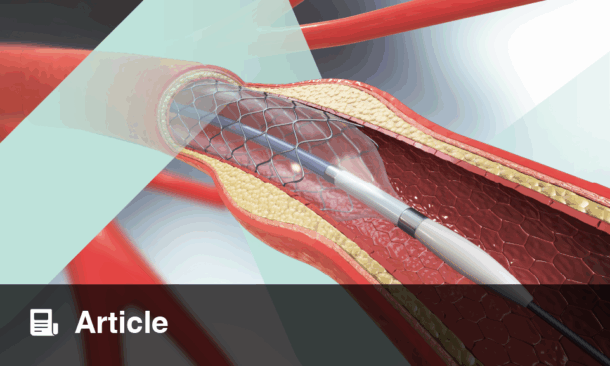THE ACCESS-TAVI trial demonstrated that a combined suture/plug-based vascular closure device (VCD) strategy significantly reduces vascular complications and bleeding events compared to a suture-only approach in patients undergoing transfemoral transcatheter aortic valve implantation (TF-TAVI). This prospective, multicentre study evaluated the efficacy of two distinct VCD strategies in managing vascular closure after TF-TAVI, a critical aspect of post-procedural care that poses challenges due to the advanced age and high comorbidity of the patient population.
In the ACCESS-TAVI trial, 454 patients undergoing TF-TAVI between September 2022 and April 2024 were randomised to one of two vascular closure strategies. One group, the suture/plug group, received one ProGlide™/ProStyle™ (Abbott Vascular) suture device along with one Angio-Seal® (Terumo) plug, while the other group, the suture-only group, was treated with two ProGlide™/ProStyle™ devices. The trial’s primary endpoint was a composite measure of major and minor access-site vascular complications during the initial hospital stay, as per the Valve Academic Research Consortium (VARC)-3 criteria. Secondary endpoints included the time to hemostasis, bleeding events classified as VARC-3 type ≥2, and all-cause mortality within 30 days. Results showed that the suture/plug strategy led to a significant reduction in vascular complications, occurring in only 27% of patients in this group compared to 54% in the suture-only group (RR 0.55, 95% CI 0.44-0.68; p<0.001). Additionally, the suture/plug group had a shorter time to hemostasis (108±208 seconds vs. 206±171 seconds; p<0.001) and a lower rate of significant bleeding events (6.2% vs. 12.1%, RR 0.66, 95% CI 0.43-1.02; p=0.032). Mortality rates at 30 days did not differ significantly between the groups.
This study provides valuable insight for clinical practice, as it highlights the advantages of combining suture and plug-based VCDs to improve hemostasis and reduce complications following TF-TAVI. The findings suggest that adopting a combined suture/plug strategy could be beneficial, especially given that 40% of patients in the suture-only group required an additional closure device, typically a plug, to achieve adequate hemostasis. The study also emphasises the importance of echo-guided vascular access to further optimise procedural outcomes, although its use was not universal in this trial. Future research may explore standardising plug device selection and incorporating imaging guidance to enhance procedural consistency and further minimise access-related complications in this high-risk population.
Reference
Rheude T et al. Comparison of strategies for vascular ACCESS closure after transcatheter aortic valve implantation: the ACCESS-TAVI randomized trial. Eur Heart J. 2024;DOI:10.1093/eurheartj/ehae784.








